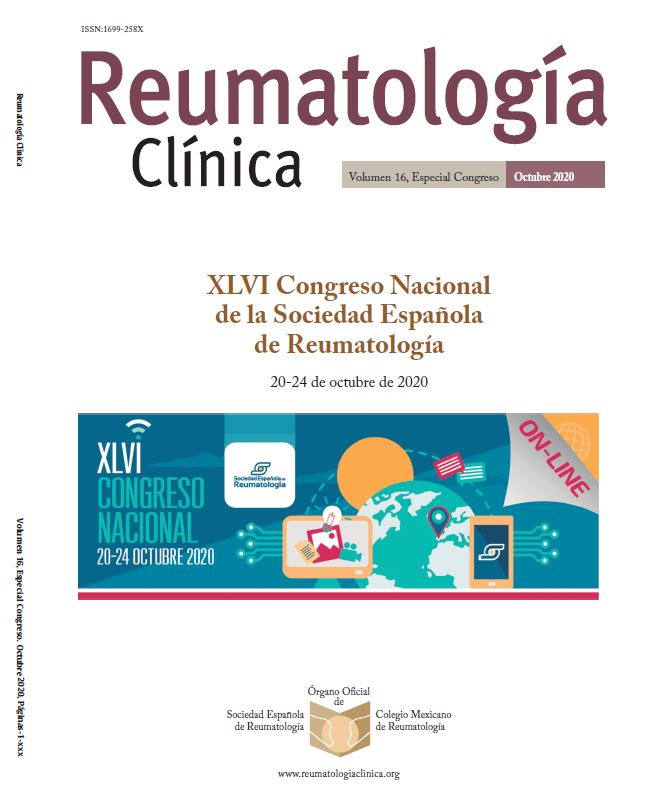P019 - MAINTENANCE OF CLINICAL RESPONSE IN INDIVIDUAL CHILDREN WITH JUVENILE IDIOPATHIC ARTHRITIS TREATED WITH SUBCUTANEOUS ABATACEPT
1Hospital Universitario y Politécnico La Fe. Valencia. 2PRINTO. Istituto Gaslini. Genoa (Italy). 3PRCSG. CHMC Cincinnati (USA). 4PRINTO. Star Medica Hospital. Mérida Yucatán (México). 5Excelya. Boulogne-Billancourt (France). 6Bristol-Myers Squibb. Braine-L’Alleud (Belgium). 7Bristol-Myers Squibb. Princeton. NJ (USA).
Introduction: The efficacy of SC abatacept (ABA) in patients (pts) with polyarticular-course juvenile idiopathic arthritis (pJIA) was shown in a 2-year (yr), Phase III, open-label international study (NCT01844518). However, it is unknown whether each individual pt within a treatment group consistently achieves the same efficacy endpoint at all time points.
Objectives: To investigate whether ABA efficacy is maintained by individual pts with pJIA over time.
Methods: In this subgroup analysis, pts in two age cohorts (2-5 yrs and 6-17 yrs) who achieved clinical response to weekly SC ABA (10 to < 25 kg [50 mg], 25 to < 50 kg [87.5 mg], ≥ 50 kg [125 mg]) at Day 113 (time point of primary pharmacokinetics endpoint1) were followed for 2 yrs. Stringent efficacy outcomes selected for analysis included JIA-ACR70, JIA-ACR100, Juvenile Arthritis Disease Activity Score 71 (JADAS71) minimal disease activity (MDA; ≤ 3.8) and JADAS71 inactive disease (ID; ≤ 1) rates. Prognostic factors for sustained response were investigated using logistic regression.
Results: A total of 219 pts entered the study (46 [21.0%] 2-5 yrs; 173 [79.0%] 6-17 yrs) and a subgroup of these pts achieved a clinical response at Day 113 (Table 1). Most pts who achieved JIA-ACR70, JIA-ACR100, JADAS71 MDA and JADAS71 ID at Day 113 sustained their response at Day 393 and at Days 393 and 645 in the 2-5-yr and 6-17-yr cohorts (Table 2). Across cohorts, more than 75% and 60% of pts maintained a JIA-ACR 70 and JADAS71 MDA response through Day 645, respectively. Prior biologic (b)DMARD use was an important prognostic factor. In pts aged 6-17 yrs, sustained JIA-ACR70 response rate at Days 393 and 645 was 81% (57/70) in pts who did not have prior bDMARDs vs 57% (12/21) in pts who had prior bDMARDs (p = 0.0715); sustained JADAS71 MDA response rate was 71% (37/52) vs 37% (7/19; p = 0.0320). Prognostic factors for JIA-ACR100 response and JADAS71 ID in pts aged 6-17 yrs and for all outcomes in pts aged 2-5 yrs could not be determined due to low pt numbers.
|
Table 1. Proportion of pts who achieved a clinical response at Day 113 |
||
|
Endpoint |
Pts with response at Day 113 |
|
|
2-5 yrs (n = 46) |
6-17 y (n = 173) |
|
|
JIA-ACR70 |
34 (74) |
91 (53) |
|
JIA-ACR100 |
19 (41) |
25 (15) |
|
JADAS71 MDA |
28 (61) |
71 (41) |
|
JADAS71 ID |
17 (37) |
28 (16) |
|
Data are expressed as n (%). ID: inactive disease; JADAS71: Juvenile Arthritis Disease Activity Score 71; MDA: minimal disease activity; pt: patient; yr: year. |
||
|
Table 2. Proportion of responders at Day 113 with sustained clinical response at Day 393, and at Days 393 and 645 in cohort aged 2-5 yrs and cohort aged 6-17 yrs |
||||||||
|
2-5-yr-old pts who achieved a clinical response at Day 113 |
6-17-yr-old pts who achieved a clinical response at Day 113 |
|||||||
|
JIA-ACR70 (n = 34) |
JIA-ACR100 (n = 19) |
JADAS71 MDA (n = 28) |
JADAS71 ID (n = 17) |
JIA-ACR70 (n = 91) |
JIA-ACR100 (n = 25) |
JADAS71 MDA (n = 71) |
JADAS71 ID (n = 28) |
|
|
Day 393 |
32 (94) |
12 (63) |
25 (89) |
10 (59) |
78 (86) |
20 (80) |
58 (82) |
21 (75) |
|
Day 645 |
32 (94) |
11 (58) |
23 (82) |
9 (53) |
69 (76) |
15 (60) |
44 (62) |
18 (64) |
|
Data are expressed as n (%). ID: inactive disease; JADAS71: Juvenile Arteritis Disease Activity Score 71; MDA: minimal disease activity; pt: patient; yr: year. |
||||||||
Conclusions: The majority of individuals with pJIA who achieved stringent efficacy endpoints with weekly SC abatacept by Day 113 sustained that clinical endpoint over time. Prior bDMARD use may be a prognostic factor for sustained response over 2 yrs.
Código EUDRACT: NCT01844518.
References
- Brunner HI, et al. Arthritis Rheumatol. 2018;70:1144-54. Abstract presented at EULAR 2019. Published in Ann Rheum Dis. 2019. DOI: 10,1136/annrheumdis-2019-eular.236.






